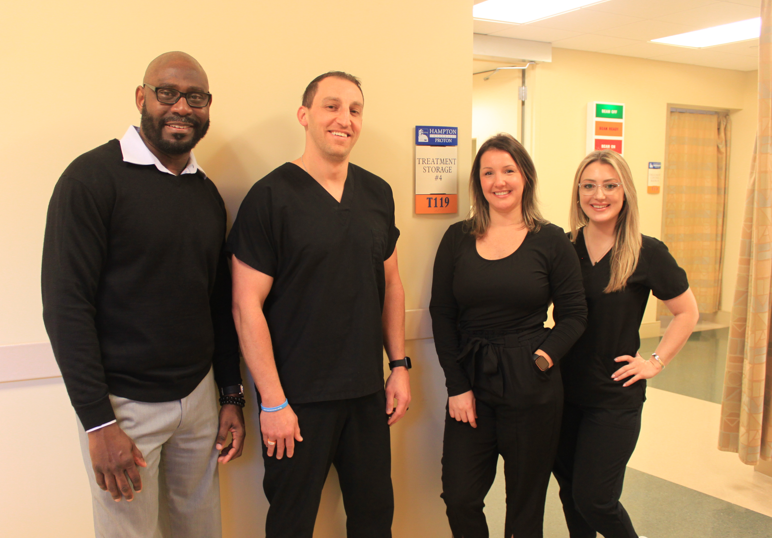FOR IMMEDIATE RELEASE
October 23, 2023
The newly upgraded room will allow for faster and more efficient cancer treatment
Hampton, VA—The Hampton University Proton Cancer Institute (Hampton Proton) has started treating its first patient in its newly recommissioned Room 4 using pencil beam scanning. The upgrade of this room, which originally delivered treatment using uniform scanning via gantry, now allows the center to treat more efficiently with pencil beam proton therapy in two of its five treatment rooms. Currently, Hampton Proton is one of the only centers in the country to treat with this method in addition to uniform scanning and double scattering. In the coming years, the facility expects to begin treating patients in a seated position due to its collaboration with Leo Cancer Care.
The process of updating Room 4 to deliver pencil beam radiation took two and a half years, said Dr. Alejandro Carabe, Hampton Proton’s Chief Medical Physicist. The process took longer than anticipated because the facility had to acquire the necessary equipment and manpower; though, the key element was ensuring the center was still treating its scheduled patients.
“You need to make sure that the clinic runs exactly the way that it should [before] taking care of the commissioning process – that’s where a lot of the delay happens,” he said.
Now that Hampton Proton has two treatment rooms treating with pencil beam, it expects to see more patients being treated faster and more efficiently. The center currently has five treatment rooms, one of which is in the process of being converted to treat with Leo Cancer Care’s Marie system by 2026, pending FDA approval. The other two rooms currently treat uniform scattering and double scanning, which require the use of apertures and compensations to achieve precise delivery. Pencil beam may be preferred for certain types of cancers, which will be decided by one’s physician.
“Now that the center has another room delivering pencil beam radiation, we are able to see even more specialized cases and allow those patients to receive treatment even more efficiently,” said MaryBeth Sullivan, Hampton Proton Executive Director. “Allowing for another room to treat this way makes the planning process better for our dosimetrists and physicists because if more patients require this form of treatment, we can accommodate them much quicker. The reopening of Room 4 is a success for our physics and dosimetry team, our clinical operations staff, our patients and Hampton Proton’s future. Our goal is to deliver the number one patient experience, and this grand reopening is moving us in that direction.”
_________________________________________
About Hampton University Proton Cancer Institute (Hampton Proton)
The Hampton University Proton Cancer Institute (Hampton Proton), established in 2010, has successfully helped fight the cancers of more than 4,000 patients from across the globe. Located in Hampton, Virginia, Hampton Proton is the largest standalone proton treatment center in the country, and at its inception, was the eighth such center in the United States.
Proton therapy is universally accepted as a viable and effective method to treat many forms of cancer—one of the top killers in Virginia. It is a noninvasive option that precisely targets the tumor, sparing healthy tissue. At Hampton Proton, patients receive outpatient treatment in about 30 minutes, which means no hospital stays, allowing them to maintain their current lifestyle. The center treats several types of cancer, including breast, lung, prostate, head & neck, ocular, brain & spine, gastrointestinal and pediatric tumors.
Media Contact:
Lourdes Hernandez
Lourdes.Hernandez@hamptonproton.org



